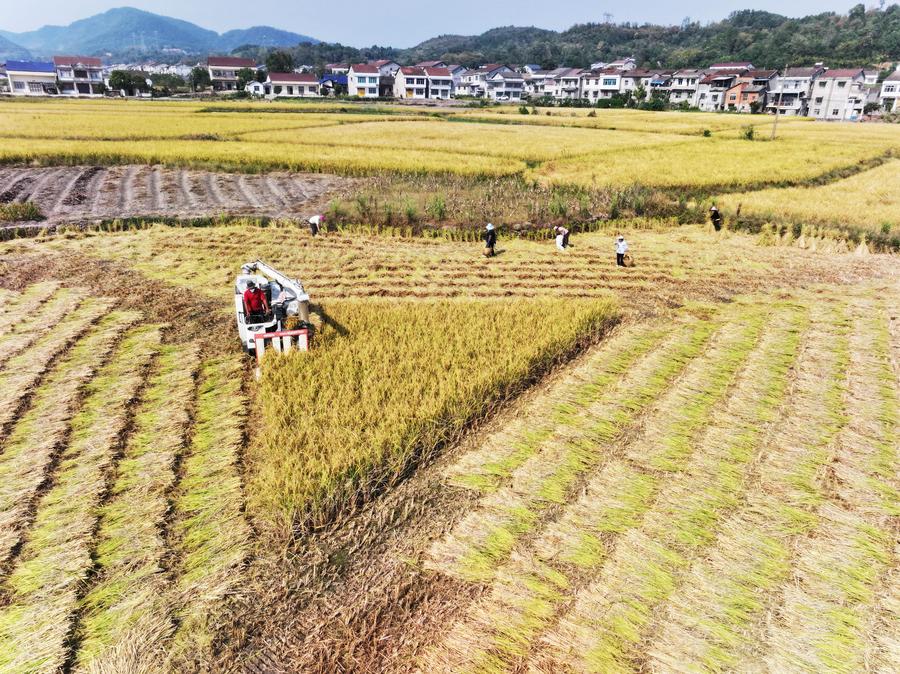Survey reveals notable growth in farmland
China Daily, December 24, 2024 Adjust font size:

China has seen a significant shift in farmland distribution, with both northern and southern regions reporting growth after years of divergent trends, a national legislator said Sunday.
China's total farmland now spans 128.6 million hectares, with 50 percent dryland, 24.3 percent paddy fields and 25.6 percent irrigated land, according to the 2023 national land use survey.
Liu Guohong, vice-minister of natural resources, presented the findings during a session of the 14th National People's Congress Standing Committee, the country's top legislative body.
The survey revealed a net increase of 140,443 hectares of farmland south of the Qinling Mountains and Huaihe River, with a trend of farmland shifting from steep slopes to flatter terrains. Over 1,500 pilot projects covering 480,000 hectares have been implemented since 2019, resulting in 44,000 additional hectares of arable land and a reduction of 10,000 hectares of construction land.
Efforts to strengthen farmland conservation and improve productivity have bolstered food security, Liu said. High-quality farmland projects have been prioritized, with more than 66.7 million hectares upgraded by the end of 2022. These efforts have supported China's grain production, which has exceeded 650 million metric tons annually for several years.
Regions such as the northeastern black soil area and irrigated plains have been targeted for upgrades to enhance soil fertility and output. The Central Rural Work Conference held last week reaffirmed the need for high-quality farmland construction and stricter oversight of funding and safety.
The central government has increased subsidies for high-quality farmland construction from 1,300 yuan ($164.40) to 2,400 yuan per hectare this year, focusing on maintenance and management, said Liu Li, an associate researcher at the Chinese Academy of Agricultural Sciences.
China is also combating farmland degradation, protecting over 20 million hectares of black soil in key counties. Since 2021, the government has supported more than 1,880 irrigation renovation projects and over 200 new irrigation initiatives.
Efforts to address heavy metal pollution on farmland are progressing, with national monitoring data indicating a decline in contamination at key sites. Additionally, the country is conducting its third national soil census to collect data on soil properties, soil types, and land use.